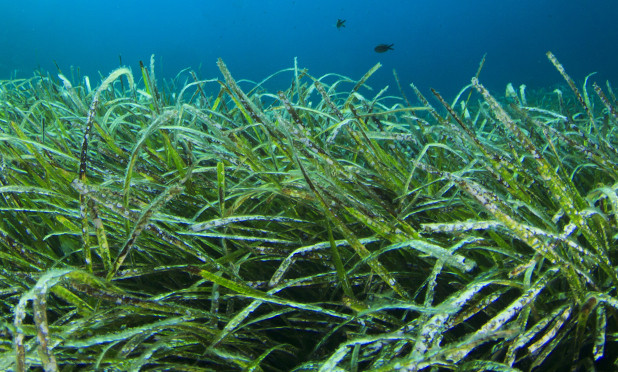The U.S. Department of Energy (DOE) today announced $36 million for 11 projects across 8 states to accelerate the development of marine carbon dioxide removal (mCDR) capture and storage technologies. Funded through DOE’s Sensing Exports of Anthropogenic Carbon through Ocean Observation (SEA-CO2) program, these projects will support novel efforts to measure, report, and validate mCDR and identify cost-effective and energy efficient carbon removal solutions. Advancing innovative approaches like mCDR to slash greenhouse gas pollution is critical to the Biden-Harris Administration’s efforts to tackle the climate crisis and achieve a net-zero emissions economy by 2050.
One of the 11 new projects will be led by The University of Texas at Austin (Preston S. Wilson, Cockrell School of Engineering & Ken Dunton, The University of Texas Marine Science Institute).
The team is using acoustic methods for marine carbon dioxide removal based on blue carbon burial in seagrass meadows.
Seagrass meadows have been identified as important sinks in the global carbon cycle, because they are highly productive systems that bury organic carbon. Furthermore, carbon sequestration in seagrass meadows, a form of marine (also known as blue) carbon dioxide removal (mCDR), has been proposed as a low-risk, nature-based solution to offset carbon emissions and reduce the effects of climate change. The net burial of carbon is related to net ecosystem productivity (NEP) as well as carbon that is imported and exported by various physical, chemical, and biological processes. Conventional methods to determine NEP require manual sampling and laboratory analysis, both of which are time intensive and expensive. The proposed concept utilizes passive acoustic measurements to non-invasively monitor NEP over timescales exceeding one year with high temporal resolution. The method detects the acoustic signature of bubbles that are released from seagrass leaves when the surrounding water is supersaturated with oxygen. The sound of gas ebullition is a dominant feature of the soundscape, and it can be detected and classified using machine-learning-based signal processing techniques and related back to NEP and ultimately back to the net burial of carbon. It is envisioned that this system can be used to monitor the performance of large-scale seagrass meadow remediation projects undertaken for the purpose of mCDR.









